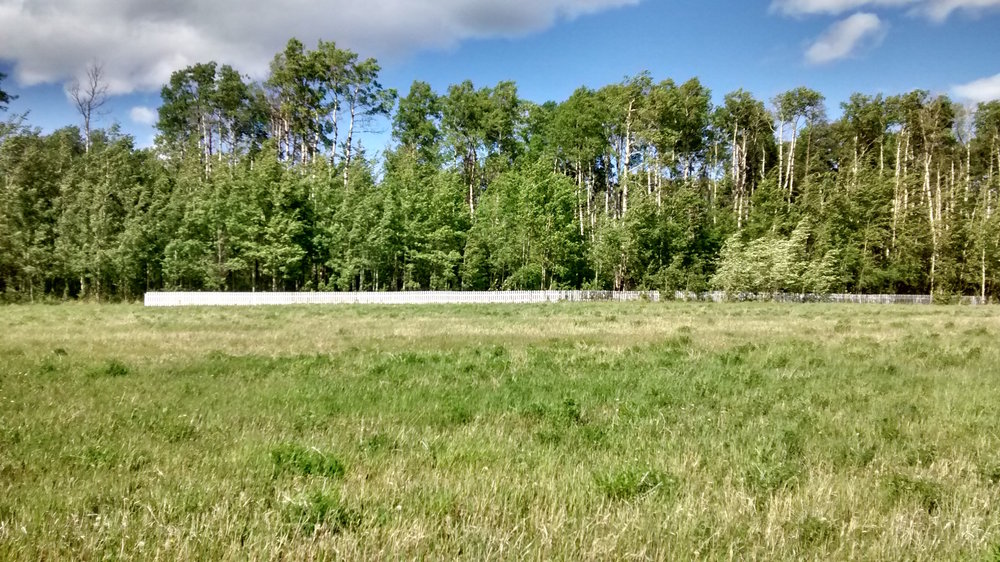
Peter von Tiesenhausen’s ‘Lifeline’. Photo courtesy of the artist.
By Haley Bassett, October 16th 2020
For this article, I will draw on the principles of semiotics as well as my personal experience with Demmitt artist Peter von Tiesenhausen’s artwork Lifeline. For a primer on semiotics, check out part one of this series.
Tiesenhausen’s Lifeline is a continuing project that began in 1990. Each year since then, the artist has added an eight-foot section to a line of picket fence that is viewable from his studio window. The newest sections are pristine, while the earlier sections have been almost entirely reclaimed by nature. The result is a gradation of crisp white boards that slip further into decay as you travel down the line.
It’s one of those works that can’t be done justice in a photograph; it has to be experienced in person. It is a conceptual work that is less concerned about aesthetics than its signification. It may not fit some people’s idea of art, but it is a powerful piece nonetheless.
Part of its power lies in its simplicity. It’s a fence in a field that is slowly ravaged by time. However, the ritualistic act of adding a section each year—its placement incongruous in a nondescript field—as well as our subverted associations with a white picket fence, elevates Lifeline to a surreal object in a dreamlike space wherein the slow march of time can be visualized in sharp relief. As I walked along its length, I felt the decades in waves, as if time itself could fold, crest and crash into a viewer with each step. It is a feeling that I remember well, over a year after I experienced it.
Tiesenhausen wields the semiotic signifier of the fence effectively by understanding its baggage and leveraging it in this work. A white picket fence is indivisible from the false promise of suburbia, middle-class success, a nice home and a beautiful family—something we are all pressured to strive for. In building this fence, the artist acknowledges the futility of these pursuits, and the inconsequence of his mortality, as the tally of his lifespan slowly erodes before him.
Lifeline is much more than a fence in a field. It clearly exemplifies the uneasy overlap between art and object, durability and permanence. It lays bare the indifferent forces of time and nature, and the emptiness of material pursuits. It is a sober reminder that wherever we lead, death follows.
Stay tuned next week for my conversation with Tiesenhausen about the story behind Lifeline.
Do you have an artistic endeavour you would like to promote? Is there a topic you would like me to discuss? I would love to hear from you! Please email me at programs@dcartgallery.ca.





